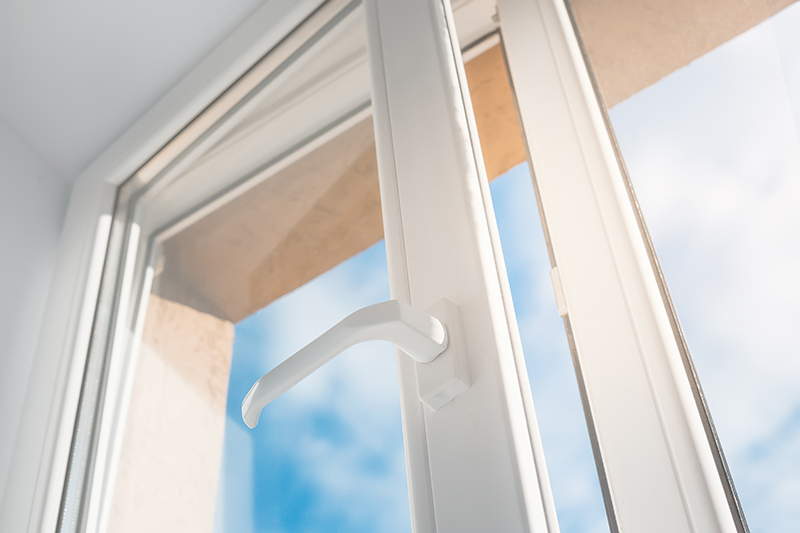Post-Consumer Vinyl Window Recycling
Canadian pilot program aims to recycle as much of the 40 million pounds of post-consumer vinyl windows as possible.

The Vinyl Institute of Canada and its Window Profile Recycling Task Group proposed a pilot project to evaluate the feasibility of collecting and recycling residential windows. The pilot program in Southern Ontario, Canada, could serve as a model for post-consumer window recycling throughout North America, determining the logistics, quality, and true cost of recycling of the deconstructed window components. Currently eight window distributor companies and two recycling companies have agreed to participate in the pilot program, and 50% of the project funding is secured. The Vinyl Institute of Canada seeks additional interested stakeholders and the remainder of the funding to begin the program in mid-2024.
Tony Vella, board chair of the Vinyl Institute of Canada, recently sat down with Window + Door to share more about the initiative.
WD: Can you give us some background about the plastic regulations in Canada?
TV: There’ s a lot of activity around single-use plastics in Canada. The government’s been successful in adding manufactured plastic items to the toxic substance list of the Canadian Environmental Protection Act. They banned six single-use plastics, including stir sticks, cutlery, straws, check-out bags, six-ring packs and some foodservice ware. It hasn’t affected durable goods like window profiles, but you never know what can transpire in future. Our job is to make sure that we educate the government and make sure they understand what some of these regulations can do down the road if they’re misapplied.
There is also the plastics registry initiative where they want all industries that use plastics to register how much they use, how much they put into the economy, how much they recycle and how much they put into the landfill. That’ll be a challenge to get all of that information from individual manufacturers and importers, so that affects the U.S. and anyone that imports into Canada. FGIA, along with the Vinyl Institute of Canada and other trade associations, have filed the responses to that initiative. There’s a lot of activity around recycling these days.
WD: Can you give us a 30,000-foot-view of the Winfinity recycling pilot program?
TV: Post-consumer vinyl recycling is done in other parts of the world, particularly in Europe, but it doesn’t exist in North America. When vinyl windows are installed, an installer goes to the jobsite, takes the old windows out, puts them in his trailer, goes to the landfill site and throws them away. Rather than go to a landfill, our proposal is for the installer to bring the old windows back to the distributor and put them in specific bins. Recycler will then take those old windows and dismantle them using technology in their facilities. The glass will go to a glass recycler, metal to a metal recycler and the vinyl industry will pick up the vinyl, bring it to a recycling facility, grind it up and reuse it in new products. We’re not creating any infrastructure at this point; we’re just connecting the dots of what is already there.
Eight installer distributors and two recyclers have volunteered to take part in this one-year pilot program. We already as an industry in North America recycle about 1.1 billion pounds of post-industrial vinyl annually. The technology exists to take scrap vinyl and grind it up and reuse it in new products, whether it’s back into windows, a fence application, pipe application or another application. We’re trying to move the needle into post-consumer instead of staying in the post-industrial type of environment we’re in today.
WD: What are the program’s goals?
TV: There are about 40 million pounds of vinyl that come from old windows that go into the landfill. We want to recover as much of that as possible. There are three things we want to figure out.
- Where are the gaps in trying to recycle post-consumer windows, whether it’s from a logistical or technological standpoint. This could apply to any material. The glass is important because for every pound of vinyl there’s probably eight pounds of glass that come with it. There’s much more glass in a window than framing material. There are opportunities for the glass industry to recover window glass.
- The yield and quality of vinyl from post-consumer windows. For every window that comes out, how much vinyl is recovered that is usable and that doesn’t require further processing.
- Understand the real cost of recycling versus landfilling. We want to ultimately come up with an economic viability case to show that this can be economically viable. If it’s not and we need government assistance or incentives to make this happen, we’ll determine how much we need.
WD: How could this possibly grow the market?
TV: We all have post-industrial recycled content in our products now. This is going to be an additional source of that reprocessed material. This provides the vinyl profile industry with a better carbon footprint because we’re taking post-consumer and putting it back into our products. This also helps from a branding standpoint. If our product is considered green, we can sell more product because of that and if we then can get jobs where recycled content is required, it could potentially grow our market.
WD: When is the goal launch date?
TV: We need money to have the program manager to run the pilot program and also fund bin rentals and transportation costs. Stakeholders are putting in their own sweat equity and in-kind contributions for the dismantling and recycling of the windows. So far we have about half the money raised we need to do a one-year pilot program. If we can get the other half by the middle of this year, we’re ready to launch this. Everybody is ready to go and eager to get started.
WD: How is this pilot program scalable?
TV: We can use this pilot program as a test case and take this model and put it anywhere in North America. We want to make sure the industry creates these closed loop-type programs because it’s harder for municipal waste management systems to take all these different materials and sort them at their facilities. If we can get to our material early in the demolition or renovation process and we can isolate our material quicker, we can avoid a lot of the contamination and comingling of different materials. These closed loop-type of industry initiatives will be important going forward.
We’ve done a similar thing at the Vinyl Institute of Canada with a medical waste program called PVC123. We started out with 30 hospitals and set up bins and any of the IV bags, tubes and anything that isn’t infectious gets thrown into these bins. A recycler then collects those bins and grinds up the material to be reused in other applications like garden hoses. We have experience in doing this as an industry. We’ve done this in the past and it’s working. We just have to fan it out to the window and door industry as well.
For more information, contact the Vinyl Institute of Canada or Tony Vella.
NGA Task Group Activity
NGA’s Sustainability and Recyclability Task Group advocates for the architectural glass industry to prioritize the comprehensive recycling of glass materials. The task group is finalizing a map of recycling facilities in North America and a new Glass Technical Paper, currently at ballot, presenting a compelling case for the environmental, economic, and societal benefits of recycling architectural glass, including the current obstacles hindering the efficient recycling of glass. To join the NGA task group, email Amber Johnson.



